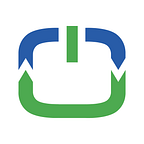Overcoming the Four Killer Problems of Silicon to Create a Better Battery
Part II — How Enovix Novel 3D Architecture Makes it Possible
In the first blog, we described the advantages of a silicon anode and the four killer problems that must be solved for its use. In this blog, we’ll explain how our battery architecture uniquely solves these problems.
Problem 1 — First Charge Expansion
In a conventional graphite anode, lithium atoms slip into the vacant spaces between the graphite layers, resulting in very little graphite anode swelling during cycling. In a silicon anode, however, lithium atoms form a lithium-silicon alloy that does not have such vacant spaces. While this alloying process results in an increased ability to store lithium, it also causes significant expansion of the anode material during charging, creating high pressure within the battery.
If a silicon anode were used in a conventional battery architecture, the pressure of anode swelling would act on the large face of the battery, creating a force as large as 1.7 tons for a battery in the example below. This force is analogous to a car standing on end on top of a cell phone sized battery.
By contrast, when silicon anodes are used in the Enovix 3D cell architecture, the anodes do not face the largest side of the battery; instead the anodes face a short side of the battery. Because these anode faces are small in area, this same pressure, therefore, creates a force of only 210 pounds as shown below.
To manage this 210 pounds of force, Enovix invented a very thin constraint system (green above) to surround the battery. This constraint system limits the battery from swelling and growing in size. Moreover, the constraint system keeps the anode and cathode materials under constant compression, maintaining excellent particle-to-particle connection.
Problem 2 — First Charge Efficiency
The first time a Li-ion battery is charged some of the lithium is permanently trapped in undesired side-reactions and surface layers on the anode and cathode particles. These losses proportionately reduce the capacity of the battery by removing lithium.
During formation of a conventional Li-ion battery with a graphite anode, ~5% of the lithium from a lithium cobalt oxide cathode will get permanently trapped in the graphite anode, never to return to the cathode. A silicon anode, by contrast, has a formation efficiency of roughly 50% to 60%, meaning that about 50% to 60% of the lithium is trapped in the silicon anode during formation and is no longer available for repeated cycling, reducing the battery’s capacity in half.
Enovix’s 3D cell architecture uniquely enables a practical solution to this problem. The Enovix cell assembly process has an added step called “pre-lithiation,” in which a thin lithium source is placed on top of the cell, within the package. By electrochemically coupling this lithium source to the electrodes, additional lithium can be dosed into the cell, replenishing the lithium lost during formation. Moreover, additional lithium beyond the initial replenishment can be dosed, providing a reservoir of lithium to a) counteract the normal lithium consumption that occurs in every battery during its life and b) provide the proper voltage balance to keep the minimum discharge voltage in the regime to be useful for devices.
The physical process by which the added lithium moves into the battery is called diffusion. The time required for lithium atoms to diffuse is proportional to the square of the diffusion distance. In a conventional battery architecture, the length of the electrode can be on the order of dozens of millimeters resulting in a pre-lithiation process that could take weeks to accomplish if a thin lithium source were placed on top of the cell. In Enovix’s battery architecture, however, the lithium is required to travel a distance of only ~3mm, which can be accomplished in hours.
Problems 3 & 4 — Cycle Swelling and Cycle Life
When conventional Li-ion batteries with graphite anodes are cycled (charged and discharged), they exhibit a modest amount of cyclic swelling (<10%). Silicon anodes, by contrast, can swell by 20%, or more. The continuous swelling and shrinking during charging and discharging can fracture the anode silicon particles and/or electrically disconnect them, and limit cycle life to less than 100 cycles, which is not commercially viable in many applications. Additionally, any swelling in the cell over its lifetime must be accommodated by larger cavity volume, effectively reducing the practical energy density of the cell.
Enovix’s unique structural constraint system applies a uniform engineered pressure on the silicon particles within the anode, limiting their fracture and maintaining electrical contact between them for an extended number of cycles. As seen below, cycle swelling is thus kept under 2%, outperforming even conventional graphite anodes. Enovix cells that have been cycled over 500 times show minimal expansion as shown below.
By addressing swelling, Enovix’s 3D cell architecture with its constraint system is designed to enable silicon anodes to achieve the commercial cycling standard of 500 complete charge/discharge cycles to 80% remaining capacity with improvements planned on Enovix’s roadmap. A complete charge/discharge cycle is where the battery is charged all the way to 4.35V and then discharged to 2.7V.
The above image shows silicon particles in an Enovix 3D cell after initial charge on the left. A photomicrograph also shows silicon particles fully charged in the same Enovix 3D silicon cell after 540 full depth of discharge cycles on the right. The compression of the anode maintains particle integrity.
Our proprietary Enovix 3D cell architecture overcomes the four challenges that have prevented a 100% active silicon anode from practical application in a conventional Li-ion cell for over 30 years. As a result, our 3D Silicon™ Lithium-ion Battery incorporates a 100% active silicon anode to deliver a step-change increase in energy density while maintaining over 500 full depth-of-discharge cycles to 80% capacity with less than 2% cell thickness swelling. And our anode is designed to use low-cost silicon for cost-effective, high-volume advanced battery production.
That’s a win-win-win-win.
